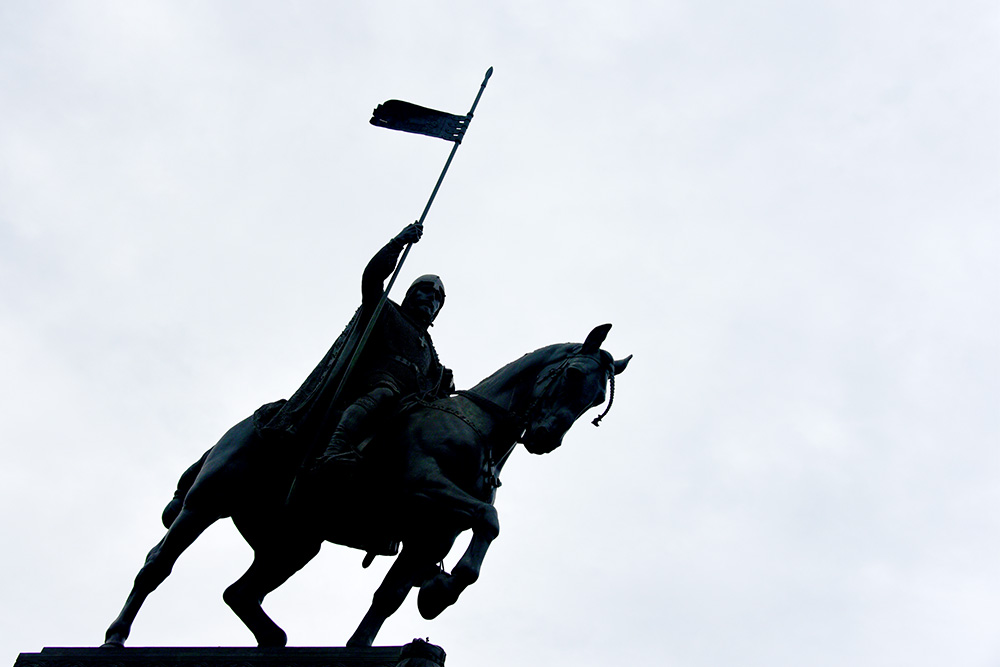St. Wenceslas
In the middle of the village, he majestically looks at his subordinates, and it is a handsome work, if not original, which is not always clear from all tourist guides!
With the exception of Karl IV, hardly any major figure in Czech history is as well-known as St. Wenceslas, Duke and Patron of Bohemia. He was the ruler from 921-935, maybe 🙂 the documentation from that time is a bit like this and that. The reign was interrupted when, in that fateful year 935, the little brother decided that it was enough, and speared him on the steps of a church.
Good Wenceslas
The duke, also know as Good Wenceslas, and for reason. Many actions in his life influenced it, more comprehensive information can be found on the internet, but as an example I can tell a small story. Wenceslas was known as a beer lover and since this malt beverage has been the biggest export product of the Bohemians throughout history, so… During his lifetime, he supported local breweries by declaring the death penalty for all those caught exporting hops, this in order to preserve the unique taste of Czech beer.
Václavské náměstí (Wenceslas Square)
Wenceslas Square is considered, and not without reason, the most important square in Prague and the entire republic, for better and for worse. Here Czech gather here whenever something significant happens. The 1998 Olympic gold in ice hockey completely filled the square, not everyone who wanted could even fit in. And it was full in 1989, when the Russian brother went home and new independence was declared, etc. So it’s not a vain place for the statue of Wenceslas, that is, for this copy.
Horse market
Today’s statue, in its current location, saw the light of day in 1913, so looking at history, the work is almost new. Considering that the square in question has served the Czechs since 1348, when Charles IV founded the New Town here. In the beginning, the square was called Koňský trh, i.e. Horse Market. The original Wenceslas statue was erected here, in the middle of the square in 1680, where it was allowed to be until 1879, after which it was moved to Vyšehrad, where it is still located. (More about Vyšehrad later).
Modesty is not always beautiful
Evil tongues say that the small and modest Václav made of sandstone was moved away from the center precisely because of its modesty. After all, the statue was of a great and mighty head of state, and a holy one.
Today’s Václav took 37 years before it was completely finished, so it’s not a wasted work! That’s a little story of the statue and a history lesson. 🙂
It’s worth keeping in mind if you come here in September. The Czech National Day, also commonly called the Feast of St. Wenceslas, has been a national holiday since September 28, 2000. And if you really want to know something special about Wenceslas, something that not even all the locals alwayss know/remember. Yes, everyone knows Václav (Wenceslav), but what was the name of the horse?
Well, Ardo. 😉

